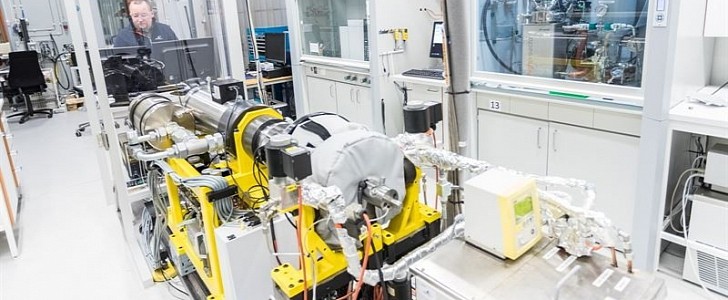A consortium of important players in the shipping industry led by technology expert Wartsila was awarded $10.8 million (€10 million) by the European Union, through a research funding initiative called Horizon Europe, for developing marine engines meant to run on ammonia fuel.
Wartsila engines are currently capable of running on natural gas, biogas, synthetic methane, and blends of up to 25% hydrogen. But this maritime technology expert wants more and is committed to introducing four-stroke and two-stroke ammonia engines for ships by 2025. Like hydrogen, ammonia doesn’t release CO2 during combustion and is seen in the industry as one of the most promising alternatives to fossil fuel.
This new project, called Ammonia 2-4, aims to develop a lab-based demonstrator for a four-stroke ammonia engine and retrofit a vessel with a two-stroke version of this engine by 2025. Naval architects C-Job, the classification society DNV, the MSC ship owner, and the National Research Council (CNR) of Italy are also supporting this initiative.
Wartsila has already made important steps towards ammonia engine development. In 2021, it successfully demonstrated an engine concept operating on a blend of up to 70% ammonia. The tests were carried out at the company’s engine laboratory in Vaasa, Finland.
Wartsila is also part of the consortium behind the Nordic Green Ammonia Powered Ship (NoGAPS) project, funded by the Nordic Innovation Organization. This project’s goal is to develop what claims to be the world’s first ammonia-powered ship. So, as the ammonia engines are being developed, a new ship that will be powered by them is also developed in parallel.
Optimal tank size and placement, energy efficiency, and safety requirements are among the top priorities, but NoGAPS also focuses on the necessary infrastructure and business models for advancing ammonia-powered shipping in the Nordic region. This new vessel would also act as an ammonia carrier, in addition to operating on this fuel.
This new project, called Ammonia 2-4, aims to develop a lab-based demonstrator for a four-stroke ammonia engine and retrofit a vessel with a two-stroke version of this engine by 2025. Naval architects C-Job, the classification society DNV, the MSC ship owner, and the National Research Council (CNR) of Italy are also supporting this initiative.
Wartsila has already made important steps towards ammonia engine development. In 2021, it successfully demonstrated an engine concept operating on a blend of up to 70% ammonia. The tests were carried out at the company’s engine laboratory in Vaasa, Finland.
Wartsila is also part of the consortium behind the Nordic Green Ammonia Powered Ship (NoGAPS) project, funded by the Nordic Innovation Organization. This project’s goal is to develop what claims to be the world’s first ammonia-powered ship. So, as the ammonia engines are being developed, a new ship that will be powered by them is also developed in parallel.
Optimal tank size and placement, energy efficiency, and safety requirements are among the top priorities, but NoGAPS also focuses on the necessary infrastructure and business models for advancing ammonia-powered shipping in the Nordic region. This new vessel would also act as an ammonia carrier, in addition to operating on this fuel.







